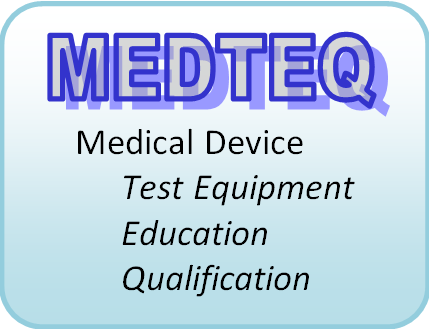All ECG databases have two discrete aspects: the digital waveform data, and the reference data. The waveform data is presented to the ECG under test, in either analogue or digital form (as allowed by the standard), and the ECG under test interprets the waveform data to create measured data. This measured data is then compared against the reference data to judge how well the ECG performs. These two aspects (waveform data, reference data) need to be considered separately. This article covers the databases used in IEC 60601-2-25.
CTS Database
The CTS database consists of artificial waveforms used to test for automated amplitude and interval measurements. It is important to note that the standard only applies to measurements that the ECG makes: if no measurements are made, no requirement applies; if only the amplitude of the S wave in V2 is measured, or duration of the QRS of Lead II, that is all that needs to be tested. In the 2011 edition the CTS database is also used for selected performance tests, some of which needs to be applied in analogue form.
All the CAL waveforms are identical for Lead I, Lead II, V1 to V6, with Lead III a flatline, aVR inverted and aVL, aVF both half amplitude, as can be predicted from the ECG Leads relationship. The ANE waveforms are more realistic, with all leads having similar but different waveforms. A key point to note with the ANE20000 waveform is the large S amplitude in V2, which usually triggers high ringing in high order mains frequency filters - more on that on another page.
The CTS waveform data is somewhat of a mystery. in 2009 MEDTEQ successfully bought the waveforms from Biosigna for €400, but that organisation is now defunct (the current entity bears no relation). The standard states that the waveforms are part of the CSE database and available from INSERM, but this information is incorrect, INSERM is responsible for CSE only. According to Paul Rubel (INSERM), the CTS database was bought by Corscience, but their website contains no reference to the CTS database, nor where or how to buy it.
Adding to the mystery, In the 2005 edition of IEC 60601-2-25 the CTS reference data was mentioned in the normative text but completely missing in the actual appendixes. The 2011 edition finally added the data but there are notable errors. Most of the errors are easily detected since they don't follow the lead definitions (for example, data for Lead I, II and III is provided, and this must follow the relation Lead III = Lead II - Lead I, but some of the data does not),
Almost certainly, the situation is affected by a moderately wide group of individuals associated with the big manufacturers that are "in the know" and informally share both the waveform and reference data with others that are also "in the know" - otherwise it seems odd that the errors and omissions would persist. Those of us outside the the group are left guessing. The situation is probably illegal in some countries - standards and regulations are public property and the ability to verify compliance should not involve secret knocks and winks.
The good news is that thanks to Biosigna, MEDTEQ and now Whaleteq has the CTS database embedded in the MECG software. And the reference data is now in the standard. This provides at least one path for determining compliance. We are not permitted to release the digital data.
The experience from actual amplitude tests has been good. Most modern ECGs (software and hardware) are fairly good at picking out the amplitudes of the input waveform and reporting these accurately and with high repeatability. Errors can be quickly determined to be either:
- mistakes in the reference data (which are generally obvious on inspection, and can be double checked against the displayed waveforms in MECG software);
- due to differences in definitions between the ECG under test and those used in the standard;
- due to the unrealistic nature of the test waveforms (for example, CAL50000 with a QRS of 10mVpp still retains a P wave of just 150µV); or
- an actual error in the ECG under test
For CTS interval measurements, results are mixed. Intervals are much more difficult for the software as you need to define what is a corner or edge (by comparison, peak is peak, it does not need a separate definition). Add a touch of noise, and the whole interval measurement gets messy. Which is probably why the standard uses statistical analysis (mean, deviation) rather than focusing on any individual measurement. Due to the statistical basis, the recommendation here is to do the full analysis first before worrying about any individual results.
CSE Database
For the CTS database, the standard is actually correct to refer to INSERM to obtain both the waveform and reference data. The best contact is Paul Rubel (prubel.lyon@gmail.com). Unlike CTS, the CSE database uses waveforms from real people and real doctors were involved in measuring the reference data. As such it is reasonable to pay the US$1500 which INSERM requests for both the waveforms and reference data,
The MECG software already includes the CSE database waveforms, output in analogue form, as allowed under the agreement with Biosigna. However it is still necessary to buy the database from INSERM to access the digital data and reference data.
More information and experience on the CSE database is provided in this 2014 article.
